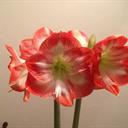Who was the first person to receive a second Nobel Prize?
Marie Curie was awarded the 1903 Nobel Prize in Physics along with her husband, Pierre Curie and Henri Becquerel for their work in radioactivity. Between 1898 and 1902, the Curies published 32 papers on their work with radioactive elements, isolating radioactive elements from natural ores and other fundamental topics on radiation.
After winning the prize, new opportunities were opened for the Curies, Pierre was offered a professorship and chair of the Physics department at the University of Paris. When Pierre died in 1906, the position occupied by Pierre was offered to Marie, making her the first woman to be a professor at the University of Paris.
Marie received her second Nobel (for chemistry) in 1911. This award was in "recognition of her services to the advancement of chemistry by the discovery of the elements radium and polonium, by the isolation of radium and the study of the nature and compounds of this remarkable element."
She was able to persuade the French government to establish the Radium Institute, an institution dedicated to research in physics, chemistry and medicine. Marie's application of radiation to medicine helped to develop mobile radiography units used during World War I.
Marie Curie died in 1934. A legacy of life and work, collections of papers and books, are kept in lead-lined boxes because of the high levels of radioactivity.
More Info:
en.wikipedia.org








